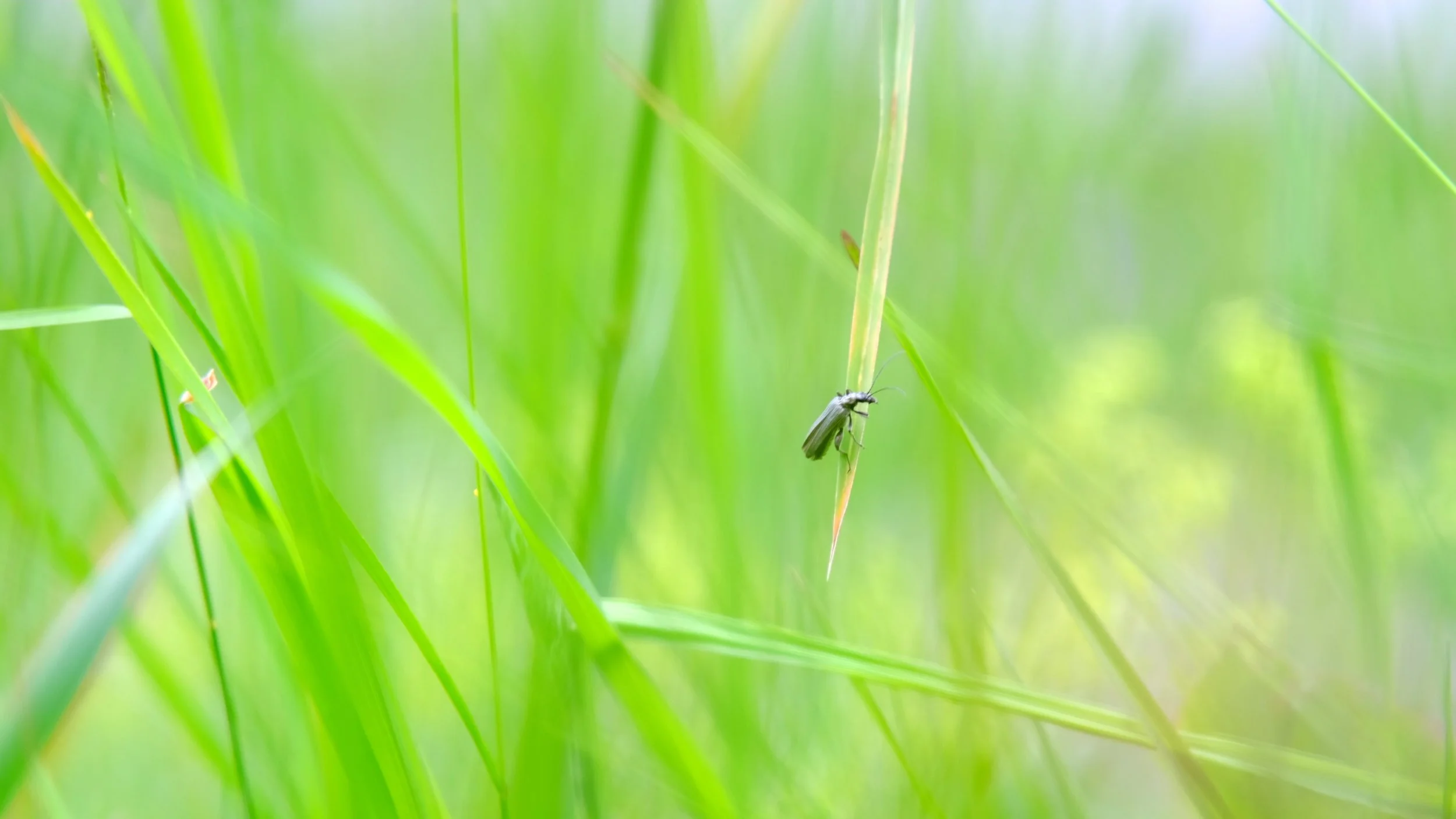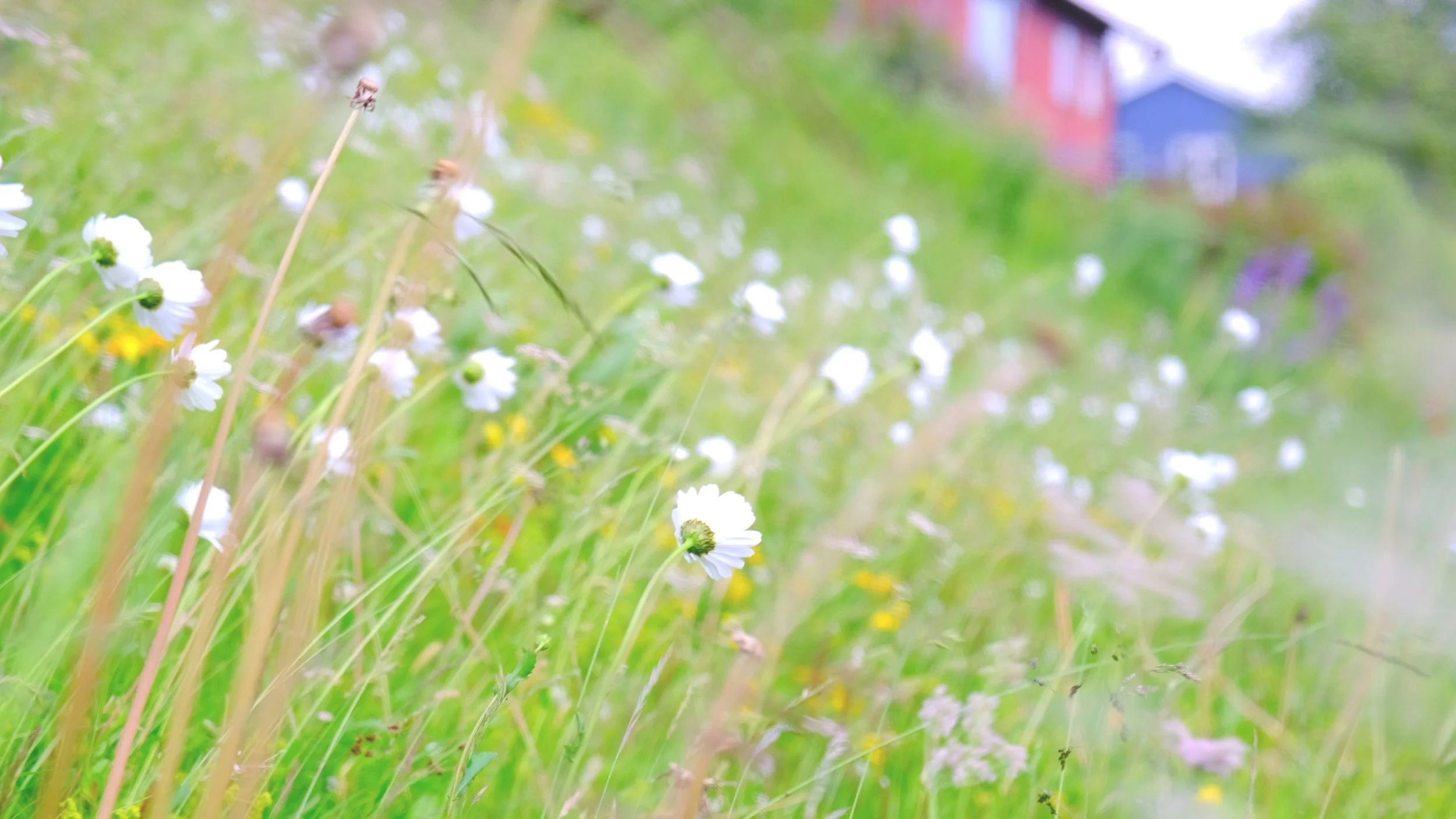Saving insects through effective altruism
🎬 See this article as a video here.
One of the perhaps 10 000 inhabitants of my grandmother’s garden.
In one of the inland valleys of Norway lays a grey house, and my second home. The house belongs to my grandmother, and is surrounded by a huge garden. Since gardens are supposed to be neatly cut, and because social expectation is a tremendous force, just like the fear of being the neighbourhood oddity who can’t take care of her garden, my grandmother (along with everyone else) use a significant amount of time and energy to keep her lawn short.
However, in one part of the garden lays an oasis of colour and life. This is where the garden is too steep to cut with a lawn mower, and the resulting wildflower meadow lays as a window to a small world that could have been.
Setting out to save this world, and to expand it to other parts of the garden, I made a video to show the rich life of the meadow, in order to persuade my grandmother to stop cutting her lawn, and let life and biodiversity return.
We are still in negotiations, and only spring will tell, but if successful, the 10 hours I put into making the video might turn another 100 square meters of garden into a wildflower meadow. If that’s the case, and if we assume that each square meter of wildflower meadow is home to 100 insects, this effort will have saved a total 10 000 insects.
In this article I’m exploring the concept of effective altruism, which is a global movement of doing good things in a clever manner, to assure you spend your time and resources not just doing good, but doing as much good as you possibly can. In this context, I wanted to find out if saving 1000 insects per hour by creating the video was the best approach, or if there are more efficient ways. Let’s compare it to three other possibilities:
Just asking: Maybe I didn’t have to go through all the trouble of making the video. Perhaps a simple plead to stop cutting the garden would have been enough. Then I would have saved 10 000 insects with an hour of conversation – tenfold the efficiency of the video approach!
Donating to a charity: After covering my own living costs, I earn roughly 15 euros per hour. 15 euros donated to a charity specialized in efficiently restoring natural ecosystems might contribute to saving 20 square meters of habitat, or creating a home to about 2000 insects, which is still more efficient than the video approach.
Buying and restoring land myself: Another idea I have seriously considered was to buy a house with a huge garden and turn that garden into a wildflower meadow. Buying a house with a similar garden and value as my grandmother’s house would cost about 350 000 euros, or 23 000 hours of my time. This approach would save a mere 0.4 insects per hour.
Before doing a proper analysis, the approaches above seemed more or less equally good. However, after seeing that one saves insect 25 000 times more efficiently than another, I am profoundly relieved I didn’t yet buy a property for the purpose of saving insects.
The calculations above are of course simplifications, and much of the data are very rough estimates, or mere assumptions. Nevertheless, it is clear that some approaches for making a positive social or environmental impact are superior to others.
However, most of us don’t have the time, the patience or the data to make a proper analysis of how to best spend our time and money for doing good. Luckily effective altruism is a global movement, with great books such as Doing Good Better, 80 000 Hours, and The Most Good You Can Do, along with organisations such as Giving What We Can, and Give Well which aim to make it easy for you and me to do the most good with our time and money.
If saving insects is not your top priority, remember that effective altruism can be applied to any effort to do well in the world.
Sign up for the newsletter or have a look at the video from the meadow or other related articles to continue exploring this issue together 🐝
The meadow in the summer breeze.

